Bears capture the imagination in a unique way, blending power, beauty and danger into a concept that is both feared and revered.
Brown bears in particular have a vast range and set of characteristics that encompass a multitude of sub-species spanning the Northern Hemisphere. Understanding what defines a grizzly bear versus other brown bear varieties is key to appreciating their diversity.
Definition of Brown and Grizzly Bears
Brown bears, scientifically named Ursus arctos, are large bear species native to parts of northern Eurasia and North America. They possess the widest distribution of any living bear species and occupy diverse habitats including dense forests, open plains and mountain ranges.
Grizzly bears constitute a North American subspecies of brown bear known as Ursus arctos horribilis. They are typically found farther inland rather than along coastal areas.
Brown Bear vs Grizzly Bear: Key Trait Differences
Grizzly bears constitute a North American subspecies of brown bear known as Ursus arctos horribilis. They are typically found farther inland rather than along coastal areas.
Compare Key Traits Between Grizzly and Brown Bears
| Trait | Brown Bear | Grizzly Bear |
|---|---|---|
| Average Weight | Up to 1,700 lbs | 200-700 lbs |
| Average Height | Up to 9 ft standing | 5-8 ft standing |
| Range | Parts of northern Eurasia and northwestern North America | U.S. Rocky Mountains, Alaska, western Canada |
| Habitat | Forests, plains, mountain ranges | Primarily mountains and high-altitude environments |
| Diet | Varies widely based on food access, includes significant vegetable matter and meat like fish | Roots, nuts, berries, grasses, insects, trout, occasional mammals |
| Fur Tips | Generally solid brown coloring | Frosted or silver/blonde color |
| Facial Profile | Flatter shape | More sharply dished shape |
Main Differences Between Brown and Grizzly Bears
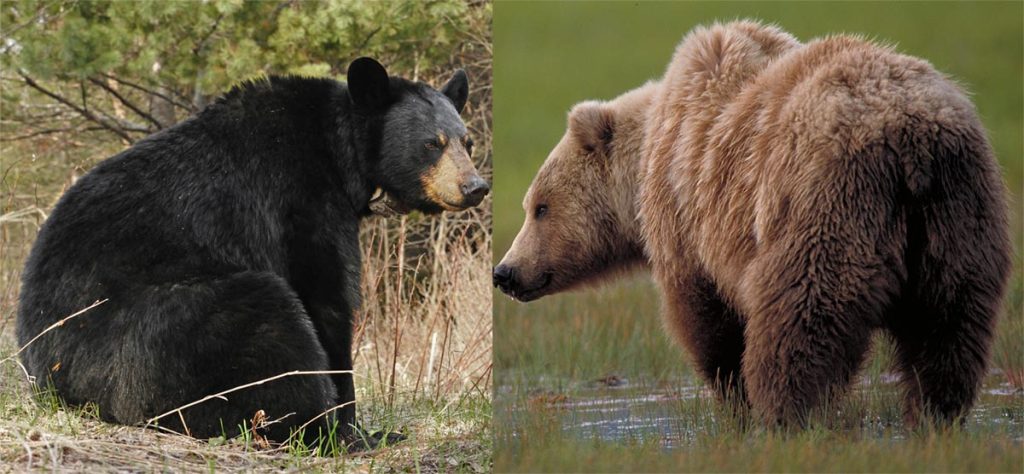
There are three principal areas of distinction between brown and grizzly bears:
- Geographical range and habitat
- Physical characteristics including size and fur coloration
- Temperament resulting from variations in diet and competition over resources
Diverging Geography Help Identify Brown Bear
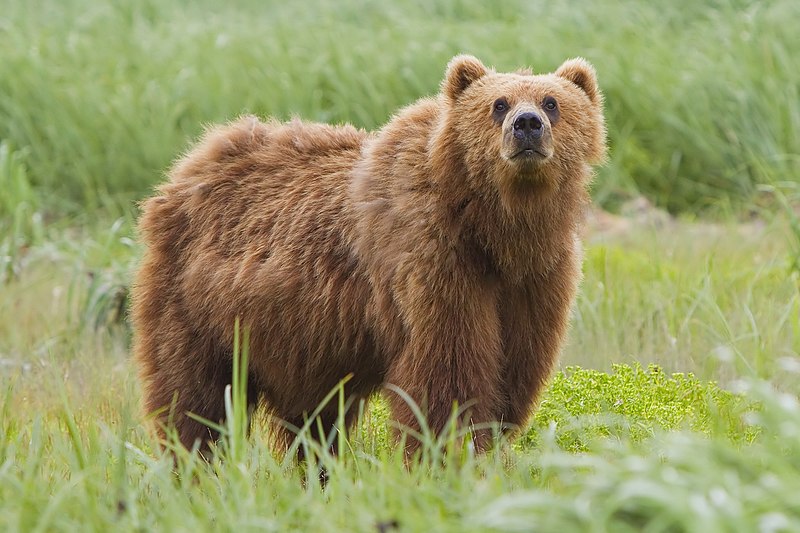
The easiest distinguishing feature between brown and grizzly bears is their native geography. Brown bears occupy a vast swath of the Northern Hemisphere across Asia, Europe and pockets of northwestern North America. Specific sub-species can be limited to small islands (Kodiak bears in Alaska) or mountain ranges (Marsican bears in central Italy).
Grizzly bears specifically inhabit the northern Rocky Mountains, Alaska’s interior, and western Canada down to parts of Wyoming, Idaho and Washington state in the continental United States.
Encroachment into grizzly territories by human development is restricting their historic whereabouts.
Separated from other brown bears for roughly 12,000 years, Kodiak bears located on Alaska’s Kodiak Archipelago evolved in isolation to become the largest subspecies on average. This examples how geographical divergence birth new varieties.
Dimension and Fur Differences Help Identify Grizzly Bears
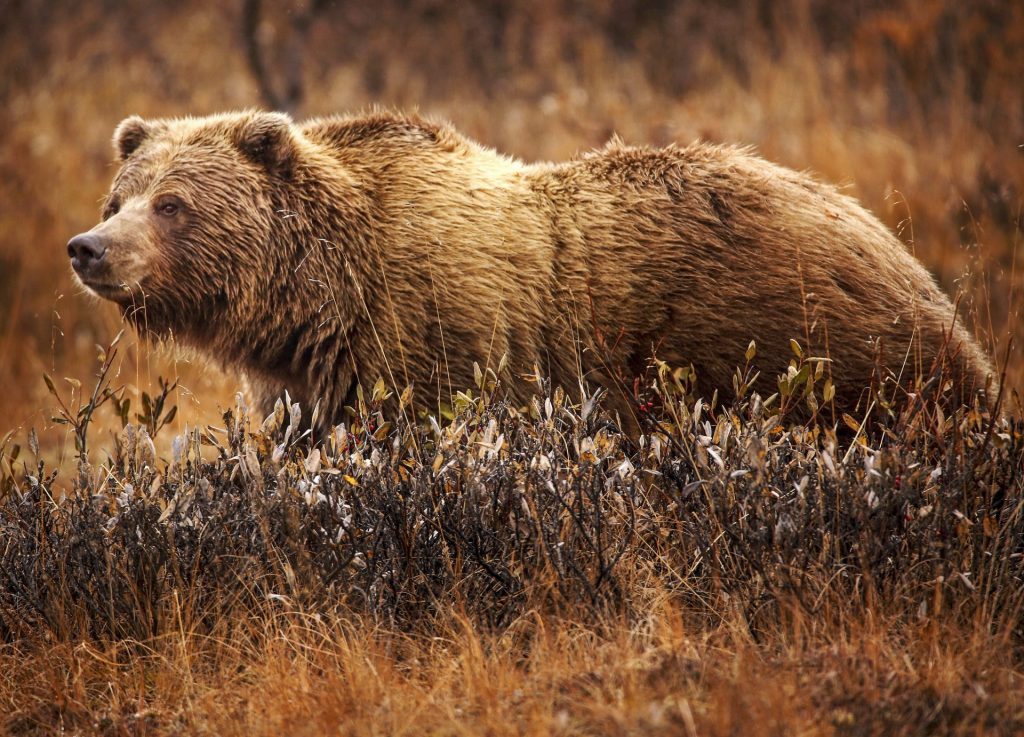
In addition to location, identifying grizzly bears relies on physical traits including their size and fur color patterns compared to other brown bears.
Grizzlies are typically smaller than their coastal brown bear relatives, weighing 200 to 700 pounds on average compared to up to 1,700 pounds for some Alaskan brown bears with access to protein-rich salmon. However, grizzlies possess longer claws for digging and defending themselves.
Fur color also helps distinguish grizzly bears, with fur tips appearing silver or blonde rather than solidly brown. This grizzling effect creates a frosted look and gives grizzlies their iconic name.
Brown bears found along shorelines generally have darker brown coats while inland grizzlies vary from blonde to black across individuals.
Food Scarcity Makes Grizzlies More Aggressive
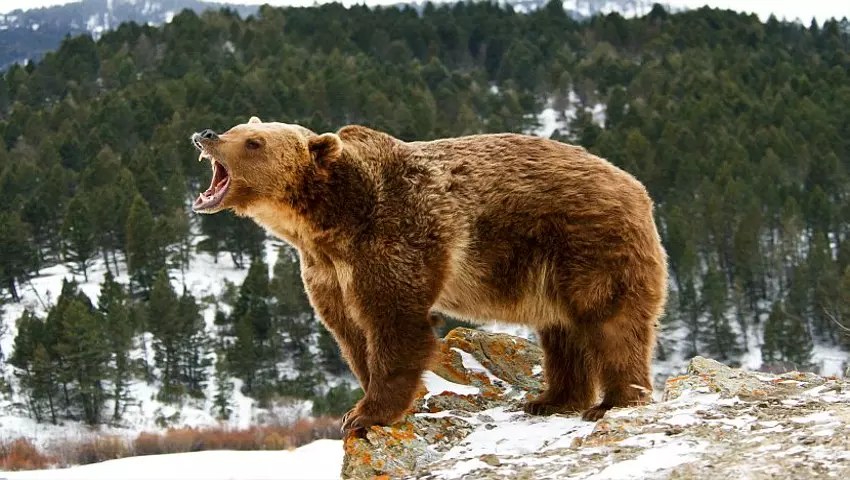
Another key difference rests in temperament. Brown bears residing along coasts and rivers feast on bountiful Pacific salmon runs and other marine food sources.
In contrast, grizzly bears in places like Yellowstone National Park forage for roots, nuts, berries, grasses, insects, trout and occasional mammal prey.
This diet variation makes grizzlies more food stressed, necessitating defending larger territorial ranges that increases confrontation chances with humans and other bears.
Multiple experts suggest this underlies the greater predisposition of grizzlies toward aggression, compared to well-fed coastal brown bear populations.
While certain distinctions characterize grizzly bears, it is important to remember they belong to the same brown bear species as Kodiak and Eurasian varieties.
All descend from a common ancestral lineage and remain close genetic relatives. Extensive DNA analysis demonstrates low genetic diversity among brown bear global populations.
There is evidence of past gene flow between isolated brown bear groups whenever their populations intersected, including polar bears in the Arctic.
This intermixing muddled traits differentiating subspecies to an extent. As human activity alters bear envionments, distinct types continue undergoing genetic blending.
Hybrid Bears Emerge Where Ranges Overlap
Grizzly territory reaching down into the U.S. states of Montana and Wyoming increasingly overlaps with migrating northwestern black bear populations.
Likewise, climate change impacts are shifting historical species boundaries across the Arctic. These trends are catalyzing interspecies breeding at unprecedented levels.
The result are emerging hybrid “pizzly” bears, “grolar” bears, and other crosses displaying an array of blended physical traits and behaviors.
Most remain fertile, accelerating the fusion of unique genetic lineages kept separate for eons. Some scientists hail this admixing as improving resilience while others mourn the loss of diversity.
Ongoing Evolution Shapes Bear Identities
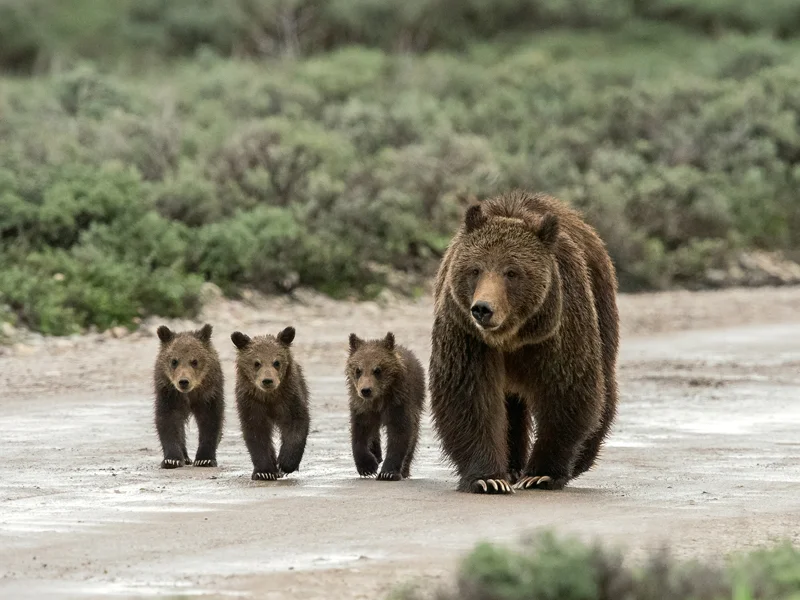
Brown and grizzly bears showcase evolution’s continual progression rather than fixed states. Their observable traits reflect adaptations to regional conditions that remain works in progress.
As environments and bear populations fluctuate, characteristics will shift in the genetic give-and-take underlying natural selection pressures.
In this context, the distinct names we give bears denote fragile distinctions. Their fuzzy boundaries will advance, retreat or dissolve entirely over generations.
Our human labels impose artificial separations on a process that remains inherently dynamic. Appreciating bears means embracing this fluidity rather than clinging to notions of permanence.
Bear Diversity Enriches Ecosystems
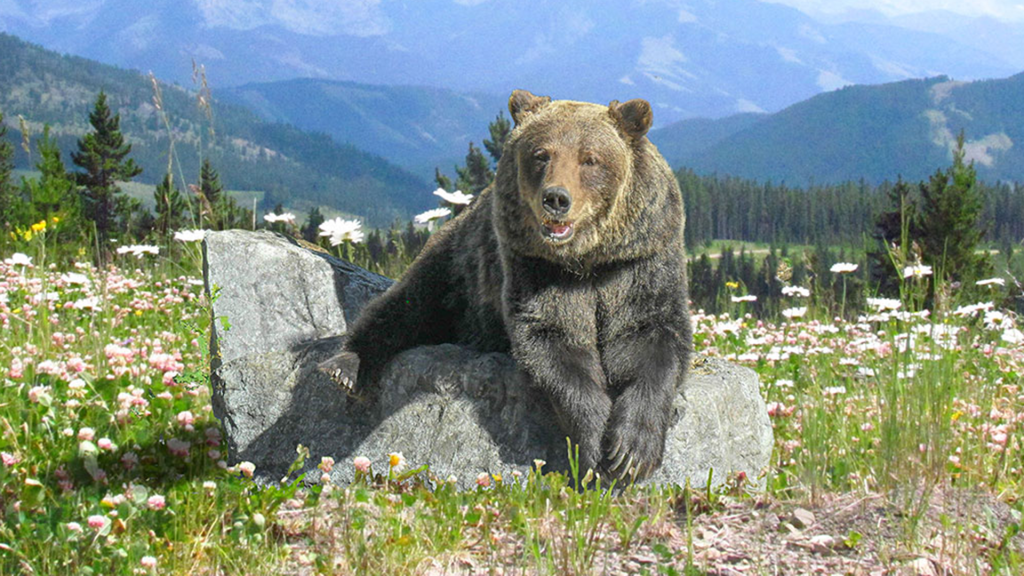
However transitory differences between brown bear subspecies may be, for now they undeniably enhance bio-abundance across ecosystems. Forests and rivers benefit from soil turnover from bear foraging.
Scavengers thrive on leftovers from bear kills. Various plants depend on bears dispersing seeds found in their diets across immense spaces.
Each regional bear community shapes terrain uniquely through localized symbioses between bears and their natural surroundings. Protecting bears means preserving these vital ecological relationships that bullet resilience against environmental disruptions. Their diversity in scale and temperaments provides a continuum of functional roles.
Understanding Bears Facilitates Coexistence
Brown bears have roamed their domain for longer than our human species has walked this Earth. Their extended history far predates and shall long outlast our current global civilization.
But in the fleeting moment that our lifespans cross paths, gaining wisdom about bears holds profound importance. Insights that distinguish a grizzly bear from its brown bear kin originated from respectful observation rather than fearful ignorance.
Continuing this stance enables finding common ground between human priorities and bear behaviors amidst shrinking wildscapes. Shared habitat makes coexistence a mandatory condition for perpetuity.
Key Takeaways on Brown Bear vs Grizzly Bear Differences
- Brown and grizzly bears belong to the same umbrella species despite regional variations in traits
- Geography, dimensions, fur and temperament help distinguish grizzly populations
- Environmental changes are eroding traditional separations between bear subspecies
- Ongoing evolution ensures the fluid, conditional nature of bear identities
- Understanding differences between bear populations facilitates mutual coexistence
Appreciating both the subtle uniqueness and inherent connections across brown bear diversity remains key to facilitating bear preservation in a human-dominated world. This truth applies equally to conservation initiatives and backyard bear encounters. Respect grounded in wisdom enables bears and people alike to thrive with our wild neighbors.
Brown Bear vs Grizzly Bear: Facts
Brown Bear Facts
Brown bears exhibit remarkable intelligence, curiosity and adaptability enabling their widespread proliferation. Here are some interesting facts about these bears:
- Brown bears can run up to 40 miles per hour, twice as fast as humans
- They possess an acute sense of smell, helping them track prey or avoid danger
- Brown bears are not true hibernators, but lower metabolic rates to conserve energy during winter
- Coastal brown bears can consume up to 90 pounds of food daily before hibernation
- Most adult female brown bears birth two cubs every three years on average
- Brown bears scratch tree bark to mark territory, communicate with other bears, or sharpen claws
References: National Park Service, World Animal Foundation
Grizzly Bear Characteristics
While similarities exist, grizzly bears also boast a number of distinctive characteristics, including:
- Grizzly claws measure between 2-4 inches in length to help slash prey and dig for food
- Their bite force clocks in at around 1,160 pounds per square inch
- Despite aggression myths, grizzlies generally avoid contact and attack only when threatened
- They possess an extra “padding” layer and muscles over the shoulders yielding a pronounced hump
- This adaption helps grizzlies swing their forelimbs forcefully as needed in skirmishes
- Grizzly bears run at speeds of 35-40 mph, faster than an Olympic sprinter
References: National Wildlife Federation, Defenders of Wildlife
Brown Bear vs Grizzly Bear: Frequently Asked Questions
Are brown bears and grizzly bears the same?
No. While grizzly bears are a subspecies of brown bear, they constitute a distinct variety based on unique adaptations to inland habitats rather than coastal areas inhabited by other brown bears.
What is the most aggressive bear?
Grizzly bears tend to be more aggressive compared to black or brown bears in defending territory or food. However, polar bears are considered the most dangerous bear when aggravated or desperate given immense power.
What is stronger, a grizzly or a gorilla?
Grizzly bears boast longer and sharper claws along with more muscular frames giving them an edge in strength over gorillas of similar sizes.
Who is stronger, a black bear or a brown bear?
Brown bears and grizzlies outweigh black bears on average in addition to possessing larger paws armed with longer claws, rendering them physically stronger.
Are grizzly bears more aggressive than brown bears?
Yes. Grizzlies show more frequent aggression linked to having to secure scarcer inland food sources and ranged compared to protein-rich coastal brown bear diets.
What is the largest bear?
The Kodiak bear, a coastal Alaskan brown bear subspecies, constitutes the largest bear variety in the world, with huge males reaching up to 1,700 pounds and standing 10 feet tall.
What is the friendliest bear breed?
Black bears tend to be less violent than brown or polar bears when encountering humans, in some cases even tolerating close proximity, likely because their smaller size reduces territory threats.
What bears are the worst to fight?
Polar bears and grizzly bears both rank among the most dangerous bears to fight given immense physical strength combining massive frames, biting power and defensive weaponry like sharp claws.
Would a polar bear beat a grizzly bear?
Research suggests polar bears often dominate in conflicts between the bear varieties owing to larger averages sizes, battle experiences defending territories and adaptations for predatory attacking compared to grizzlies.




This article is super interesting! I always assumed brown bears and grizzlies were completely different species. It’s amazing how much diversity there is within this species alone.
You’re absolutely right! While grizzlies have some distinct features, they are still genetically very close to other brown bear subspecies. It just shows how much environmental factors can influence the evolution of an animal.
I’m curious about the hybrid bears mentioned in the article. Are they fertile? And if so, how does that impact the existing brown bear populations?
Yes, most hybrid bears, like pizzly bears and grolar bears, are indeed fertile. This can lead to a merging of genes between different subspecies, which could potentially impact the genetic diversity of existing populations. Some scientists believe this could improve their overall resilience, while others worry it could lead to a loss of unique characteristics. More research is needed to understand the long-term effects of this hybridization.
The section on coexistence with bears was really insightful. It’s important to remember that these animals were here long before us, and we need to learn to share our space with them respectfully.
Absolutely! Understanding the differences between bear subspecies is a crucial step in fostering peaceful coexistence. By educating ourselves about their behavior and habitat needs, we can reduce the risk of conflict and ensure the long-term survival of these magnificent creatures.